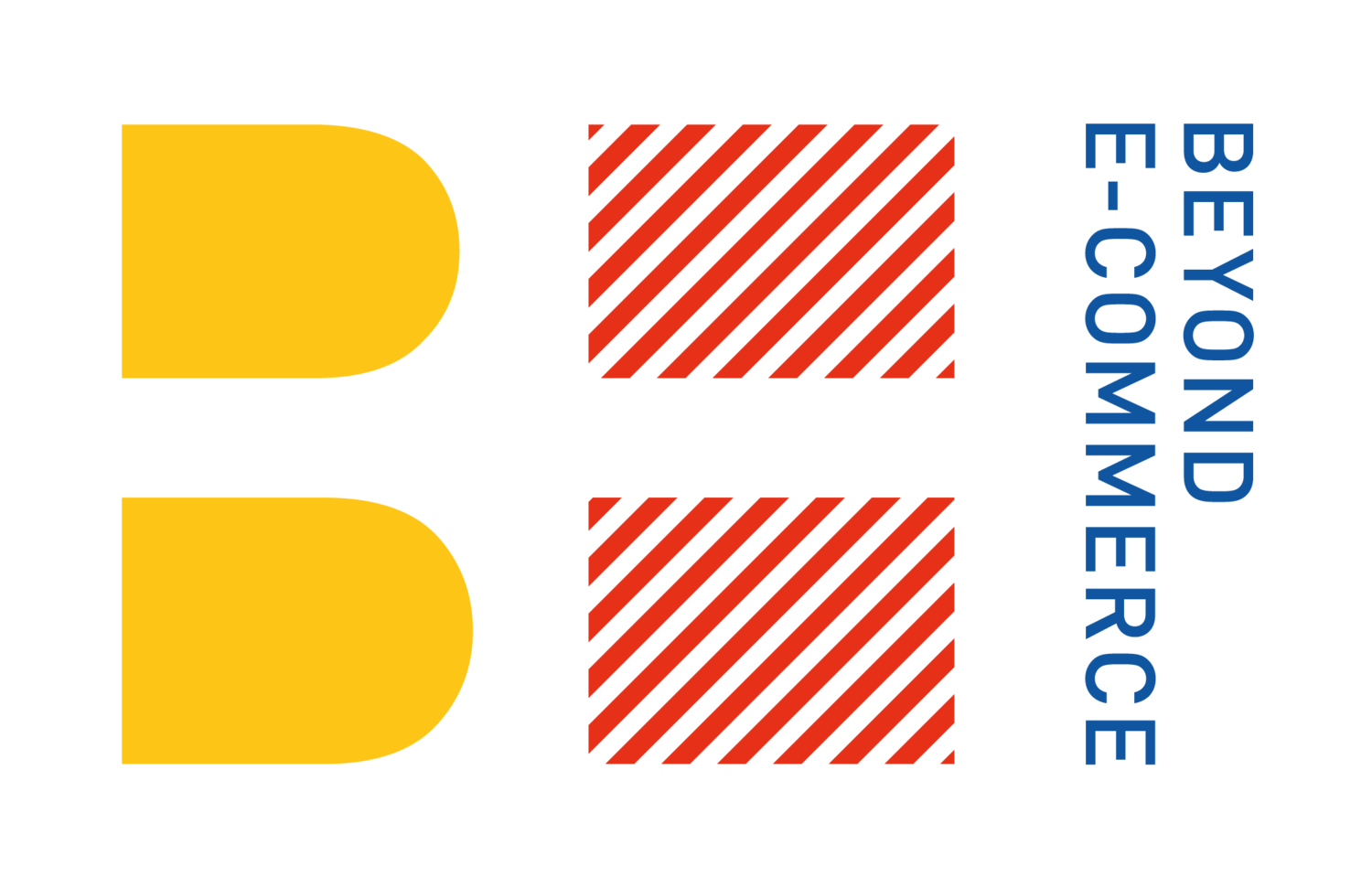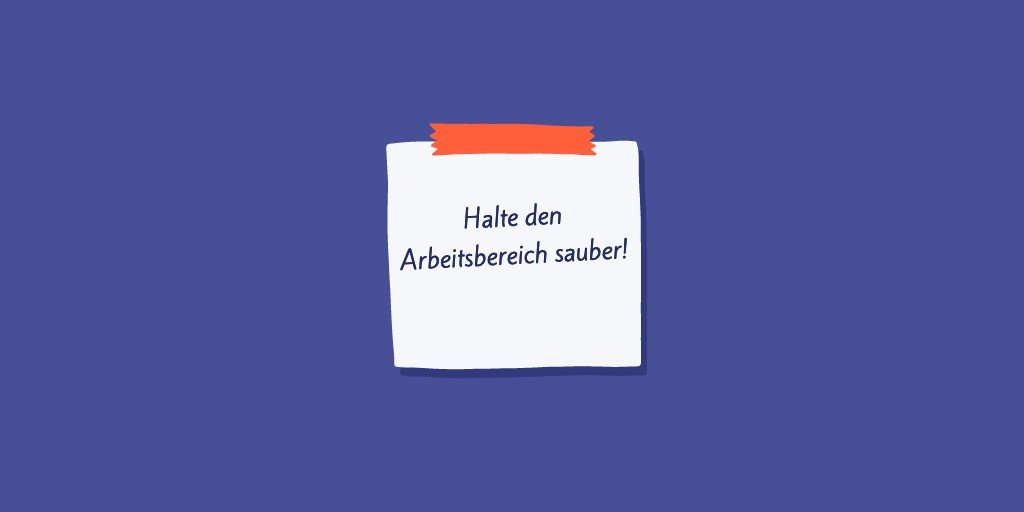Guide 5S - the perfect method for introducing lean management
Graphic: 5S as a lean method
The introduction of the 5S method is recommended as the first step towards lean management. This is a procedure for keeping workplaces in administration, the office and in logistics or production in order.
5S is a method for redesigning work areas such as warehouses, offices and production areas with the aim of optimizing processes in these workplaces in order to improve performance, safety and cleanliness in the plant. The method comes from the Toyota Production System (TPS) toolbox. The introduction of 5S ensures stability on the one hand and often a continuous flow in all areas on the other. This allows the 5S method to bring other benefits to bear, such as eliminating time-consuming searches due to fixed locations, increasing safety in your operation because everything has its own place, saving money when it comes to optimizing productivity because resources are no longer wasted, increasing quality through fewer errors and better products.
The 5S are the abbreviations of five Japanese words that all begin with S:
Seiri (Sort)
Seiton (arrange, place cleanly)
Seiso (cleaning, tidying up)
Seiketsu (keeping clean)
Shitsuke (self-discipline)
In German-speaking countries, the method is often referred to as the "5A method", with German translations being used for the individual terms, all of which begin with A. However, these are very artificial. However, these are very artificial and anyone who deals with lean management can also use the original Japanese terms. In this article, the 5A method will no longer be used as a term, but will focus on the 5S method.
For many lean experts, 5S is the best introduction tool for lean management. The method allows the lean management principles to be experienced directly in the workplace and has often been the starting point for a comprehensive lean management transformation, driven by the employees, because they have directly shaped the improvement of the working environment and organization using the 5S checklists. No method is faster to realize improvement through the implementation of lean management in practice.
Table of Contents Show
5S is sorting, reducing, optimizing, systematizing and standardizing in a control loop of five steps
5S is a method for systemizing and optimizing the workspace with defined steps that works in every workplace. When implemented correctly, 5S can increase productivity by reducing wasted time and effort. For example, by sorting and throwing away everything that is not needed, you save time searching for tools, machines or work equipment. Keeping things tidy also makes it easier to find what you need and prevents clutter from building up. Tidying up means taking the time to regularly clean the work area to ensure that tools and materials are in good condition and easy to find. Standardizing procedures ensures that everyone follows the same process, reducing errors and duplication of effort. To maintain the system, everyone in the company needs to be continuously engaged. By implementing 5S in the workplace, companies can increase their productivity and improve their efficiency.
Why 5S is a particularly effective lean management method
Tidiness and cleanliness in the workplace are not an end in themselves, but help people to work more thoroughly. The 5S enable employees to work more productively and efficiently by organizing their own workspace so that they can make full use of the tools available. The more organized and tidy your workplace is, the easier it is for yourself and for those around you! The 5Ss help employees create their own work paradise where they have control over what goes on at each individual desk or computer screen within these virtual walls.
When professionals want to have everything under control at work, nothing should be left to chance. No action, no work material should be too much or too little. Nothing should be done unnecessarily or without purpose (in this sense, there should be no "waste"). 5S implements lean management in every workplace.
The 5S of workplace organization are important to create an efficient, productive team that can work together as a cohesive unit. When everyone knows what their role is and how it contributes to the overall goal of the company's success, there's no stopping us!
Procedure for introducing the 5S method
Ideally, a "5S action day for more order and cleanliness in the working environment" is planned for the entire department and the following steps are carried out on this day:
All employees clear out everything that is superfluous, i.e. work materials are sorted, disposed of and put away.
Only the materials that are absolutely necessary for the task remain at the workstation. Each part is assigned a fixed place, which is labeled accordingly.
The quantity, condition and delivery time or rhythm are specified and also made recognizable
Then we clean up together
And a plan has been developed as to how this situation can be maintained in the long term
The guide to implementing 5S: the steps in detail
Step 1 - Seiri (sort out)
Goals:
Distinguish between needed and unneeded items. Sort out the ones you don't need! Principle: the workplace is for working, not for storage
Creating space on desks and in cupboards
Removal and replacement of damaged work equipment, machines
Better visual impression, also for customers, visitors etc.
Reduction of search and access times
Steps of the application of 5S - Seiri:
Photograph the relevant area (before / after)
Joint sorting out of items recognized as unnecessary
Go through the following three questions for each item:
Is this item needed (yes, no, maybe)
Is it needed in this quantity?
Should he be at this point?
The "Red Tags" method can be used for disputed items (or marked with "maybe"). During the red tag campaign, each employee can affix a red sticker to items that they consider to be unused. If no one uses this item within a jointly defined time frame, it is disposed of.
Step 2 - Seiton (arrange, place neatly)
Goals:
Arrange the items you actually need ergonomically and efficiently. Principle: Everything gets its place - everything has its place
The advantage of the fixed place is that the tools have to be returned to their place after use and can therefore always be found immediately
Avoid unnecessary moving of things back and forth
Clarity is created, errors are often avoided
Best practices in the application of 5S - Seiton:
The workstation should be easy to tidy, tools should be within easy reach and clearly recognizable shelves should be available
Every employee can find their way around every single workstation straight away
The more frequently an item is used for the process, the closer it is stored or kept to the work area
Step 3 - Seiso (cleaning)
Goals:
Clean while simultaneously checking whether objects are still useful for the work area. Principle for every employee: Keep the work area clean!
To ensure that this step works regularly, fixed intervals for cleaning are defined with corresponding responsible persons
Step 4 - Seiketsu (maintain cleanliness, standardize)
Goals:
Document the success of previous steps with photos and reports. Make tidiness and cleanliness the new standard. Principle: Create standards so that the 5S principles are permanently practiced in the workplace!
"Secret of success": Make tidiness and cleanliness the personal attitude of every employee - ideally not just at work. In addition, share experiences, lessons learned and successes through 5S throughout the company. 5S works and is the standard in the company!
Minimization of time and effort for searching, preparation of activities, completion and follow-up. Cost reduction for the benefit of all. Establish cleaning as a routine in the implementation of the method and in day-to-day business.
Step 5 - Shitsuke (practicing self-discipline)
Procedure:
Define regular intervals at which 5S is carried out again
Establish training for all employees on the topics of organization, continuous improvement (Kaizen), waste reduction, lean methods (lean management program for transformation)
Managers must challenge, encourage and set a good example
Key questions for successful 5S implementation
Organization I: Where does my work process start and end?
Goal: What do I need to achieve at the end of the work process? For whom? When and where?
Work: What exactly is my competence, what should I contribute?
Machines, production & tools: What do I need? Which tools, materials? Who should they come from and in what condition?
Standards: How can I set up my workplace so that I can work even if not all conditions are met?
Organization II: How can I restore a sensible state myself as quickly as possible in the event of unfavourable conditions? What do I need to clarify in advance?
Why is the 5S method so successful and what are the benefits of tidiness and cleanliness in the workplace?
5S follows the "point-line-area" principle of success. As in ball sports, you first have to control the ball yourself, then pass along an imaginary line before entire spaces (= areas) can be conquered by the players. 5S is therefore the method of choice for getting your own working environment in order. Keeping and improving points" is then the starting point for further lean methods for establishing the flow and pull principle, establishing continuous improvement (Kaizen), etc.
The advantage of 5S is a clean, tidy and sustainably well-organized and standardized workspace.
5S increases overview and safety in the workplace
Standards make work processes more comprehensible and prevent deviations
This increases transparency, even for all employees across departmental boundaries
Reduction of search times and the amount of material, tools, etc. to be kept in stock (optimization of productivity)
Promotion of personal responsibility, continuous self-optimization of one's own work area (Kaizen, continuous improvement, discipline)
Optimizes and reveals the degree of discipline (shitsuke, self-discipline) and leadership in the respective areas
5S in application in retail & e-commerce and lean logistics
Organizing a retail space and office according to the 5S system can help create a more efficient work environment. By applying it to retail, companies can improve safety, increase efficiency and reduce waste. For example, sorting inventory and removing items that are no longer needed can help eliminate clutter and make it easier to find what is needed. When you keep things organized, employees can move around the space more quickly and easily.
In retail, the 5S system can be used to optimize store layout and reduce wasted space. By sorting and organizing merchandise, stores can reduce clutter and make it easier for customers to find what they are looking for. With the help of Seiso, shelves and displays can be kept clean and dust-free, while standards help to ensure consistent product placement and pricing.
The principle of the 5S method can also be applied in the areas of warehousing and logistics (lean logistics) can also be applied. The prerequisite is that all work steps and processes are carefully scrutinized beforehand. Among other things, the aim is to create space, reduce search times and distances and shorten the induction phases for new employees.
This can be done in goods receiving or order picking, for example. In both cases, the work equipment should be sorted and the workstations structured according to a uniform pattern. This creates standardized processes. Once employees have become accustomed to this, they can be deployed flexibly in the department and are not tied to "their" place. In addition, regular cleaning and maintenance work can be carried out more quickly and easily if everything is in its place. The 5S method therefore leads to a reduction in material costs and better capacity utilization - two decisive arguments for its introduction in warehousing and logistics companies.
The purpose of 5S
The true purpose of 5S goes deeper than a one-time cleanup. The 5S method is a way to: Create standards, support the fundamental stability needed to reduce waste in any form. Create a disciplined workplace where teams focus on value-added work, and foster the essential sense of common purpose required for continuous improvement to take root.
In our consulting practice, we know that 5S plays a crucial role in a company's overall lean management system. The 5S idea was far more important than just the traditional "5S practice" when it comes to all areas of a company. It's about creating stable, sustainable processes that add value for the customer with as little waste as possible, and a means to continuously improve those processes.
Recommended reading from science on 5S
The literature on the classification of 5S has so far been very limited. The recommended document addresses this weakness and systematically categorizes the literature on 5S. The study highlights the key enablers and success factors for removing barriers to the successful implementation of 5S. The study will be useful for industry professionals as well as researchers and others involved in organizational management to understand the importance of 5S and its contribution to production performance.
See: Lean Management Guide, Lean Management Consulting, Lean IT
Does that sound like your cosmos? It seems to you that we can help?
Contact us without obligation
info@beyond-ecommerce.com
follow us on twitter







